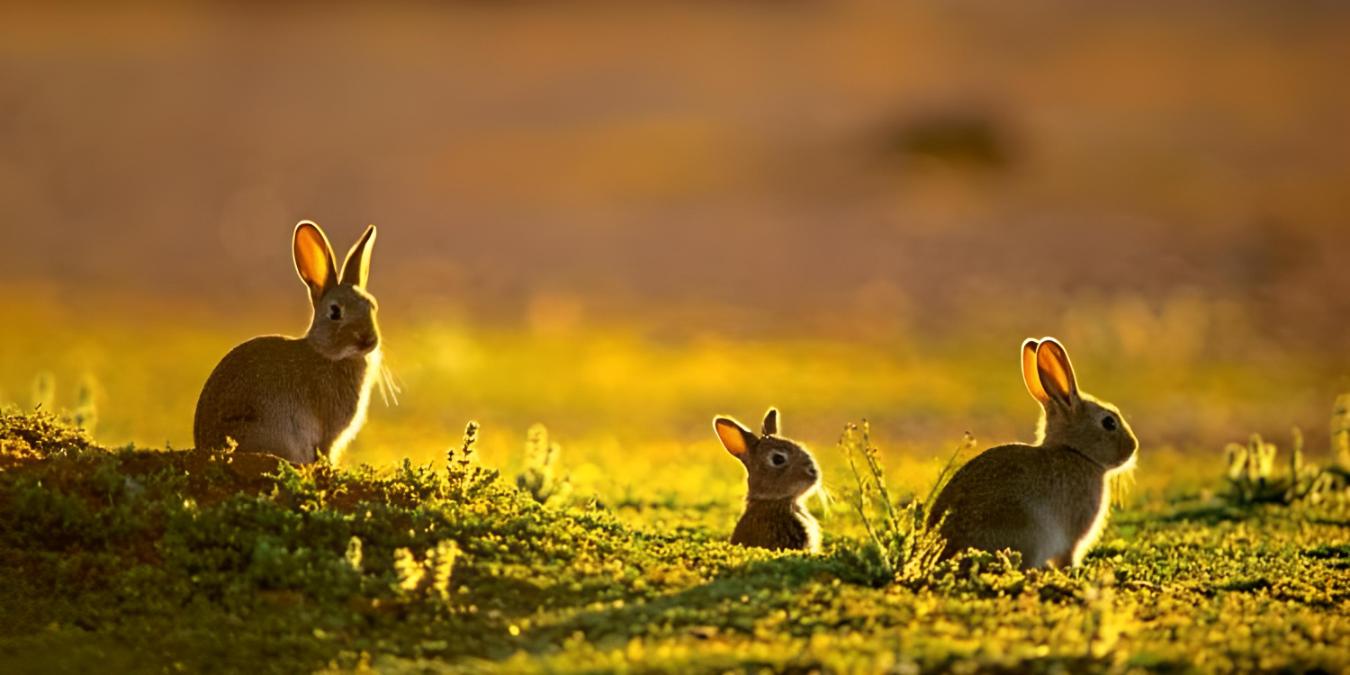Australian wild rabbits are regarded as an invasive species. But how and when did their forebears enter the continent? DNA testing reveals that all Australian rabbits are descended from a single import.
It seems that Australia’s ongoing rabbit infestation was started by a single English settler. According to genetic testing, the 24 individuals that Englishman Thomas Austin sent to the newly discovered continent in 1859 are the ancestors of all current Australian rabbits. Rabbits that had previously been imported, however, did not seem to be able to develop into an invasive species.

In Australia, rabbits are regarded as the best illustration of an invading species. These herbivores, which were brought to the continent by English immigrants but were not indigenous to Australia, proliferated quickly. They still pose a menace to local animals and vegetation and yearly result in agricultural loss of over $200 million. The introduction of the myxomatosis virus, which was supposed to kill the rabbits, and other control techniques failed to achieve the expected results.
Across the Continent
However, how did the rabbit invasion start? This matter has finally been resolved by a team headed by Joel Alves from the University of Oxford utilizing genomic studies. Alves and his colleagues used historical records of introduction occasions in conjunction with genetic analysis to integrate the results from 187 rabbits taken between 1865 and 2018 in Australia, Tasmania, New Zealand, the United Kingdom, and France.
The historical records show that the British fleet’s ships brought the first five domestic rabbits to mainland Australia as early as 1788. At least 90 other species were imported during the next 70 years, but none of these populations spread aggressively. A batch of 24 rabbits were then shipped to English immigrant Thomas Austin in 1859 for his property near Geelong in Victoria. It has been debatable up until now whether one of these imports, or a combination of them, is to blame for the current rabbit infestation on the continent.
Linkage to the Southwest of England
The answer is now available from comparative studies of rabbit genomes. It appears that despite many introductions over a 70-year span, the invasion was started by a single release of a small number of rabbits that spread thousands of miles across the continent. Austin’s introduction of rabbits in 1859 was the main source of the current population in Australia.
The origins of the invasive population in Australia may be traced to southwest England, when Austin’s family acquired the rabbits in 1859. In October 1859, Austin’s family gave him six wild bunnies and seven domestic rabbits, and they multiplied along the route to Australia, arriving at 24 animals, according to historical documents.
The researchers discovered that all rabbits in Australia now do indeed contain genetic mixtures of wild and farmed rabbits, which is consistent with this account. Additionally, it revealed that the area with the most genetic variety was close to Austin’s land, providing compelling evidence that this is where the population started.
Heritage of Wild Rabbits as a Success Factor
But why did Austin’s rabbits manage to expand quickly across Australia when earlier imported rabbits at best created tiny local populations? The introduction of a novel genotype that was better suited to environmental circumstances was the decisive element.
Historical records depict previously imported rabbits as domesticated pets with floppy ears and elaborate coat colors. Feral domestic rabbits may exhibit a variety of characteristics that make them ill-suited to surviving in the wild. They may not have had the genetic diversity required to endure Australia’s dry and semi-arid environment.
In contrast, Austin’s animals were at least partially wild rabbits. So it’s plausible that Thomas Austin’s wild rabbits and their offspring had an evolutionary edge when it came to adjusting to these circumstances.
The Past Biological Invasion
The researchers claim that genetics has a significant impact on biological invasions, in addition to variables like environmental circumstances and the number of imported specimens. The success of biological invasions must be understood if they are to be stopped since they pose a serious danger to the world’s biodiversity.
Australian rabbits have now succeeded in achieving this: Australia may have been more open to invasion due to environmental changes, but one of the biggest biological invasions in history was actually caused by the genetic composition of a tiny population of wild rabbits. This serves as a reminder that even a single person or a small group of people may have a significant negative impact on the environment.
Sources:
- How European Rabbits Took over Australia. (n.d.). How European Rabbits Took Over Australia. https://education.nationalgeographic.org/resource/how-european-rabbits-took-over-australia
- Rabbits introduced. (n.d.). Rabbits Introduced | National Museum of Australia. https://www.nma.gov.au/defining-moments/resources/rabbits-introduced


